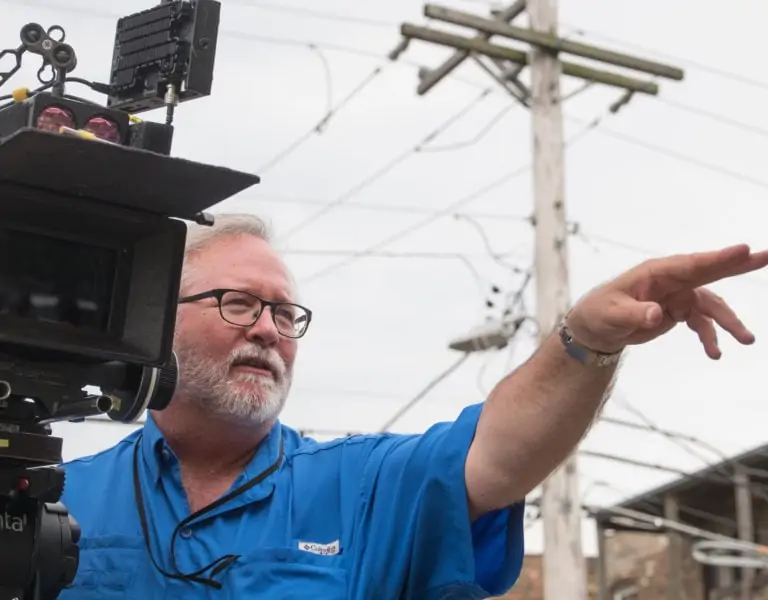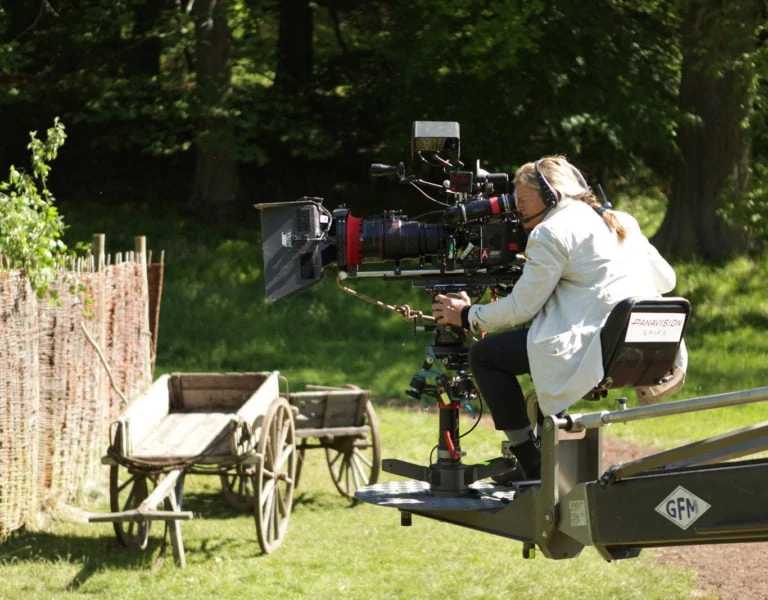Home » Features » Opinion » Letter From America »
For those who rely on their vision for their craft, the prospect of eye surgery can be an unnerving prospect. Steven Poster ASC goes under the knife and comes out the other side with a new perspective on colour.
S*** happens… I don’t mean to be vulgar. But sometimes that’s the only way to express these things that happen to us: There are catastrophic things. There are dangerous things. And there are things that sneak up to you over a longer period of time.
That’s one of the conditions that I want to report on in this column. How many of you have ever heard: “Eventually, you are going to have your cataracts removed.” I’m sure many of you who have crossed the 50-year line have heard something similar from your ophthalmologist. Well, I did. And like the smart guy I am, I ignored it for far too long. I was paranoid about changing anything to do about the way I see. The idea of someone, or some machine, cutting into my eyes really put me on edge.
But several years ago, I got involved in some research about colour; some deep research about how we see and perceive it. Over the first two years of our research we had no viable way to see the fruits of our labours. So, I wasn’t bothered about what I didn’t perceive as a detriment to the work we were doing.
Oh, I was very good about seeing my eye doctor every year. And as I got older, I had my glasses prescription filled as soon as I got the formula. So that was enough, wasn’t it? Not even close… I even changed doctors along the way to get a second opinion. The opinion didn’t change: “Get your cataracts removed.”
As my condition worsened, I noticed that the halo around headlights coming toward me was getting bigger and starting to obstruct my night vision. It got a little scary. I found myself slowing down as it got hard to avoid the big ring of light around the cars approaching. That started making me feel old. I wanted to avoid that at any cost.
I have always been very protective of my eyes, as I know many of us who rely on our eyesight for our art and our commerce are. So, I researched ophthalmologists in the LA area. I found one who pioneered the use of laser surgery on the West Coast for removing cataracts.
On my first visit, I mentioned that I was nervous about the operation. I also told him that I didn’t want to appreciably change my vision as I rely on how I see for my art and my living. He was very understanding. He sat with me for over a half hour explaining the process and the possibilities.
I heard about the different kinds of lenses that were available. I found out that there were some people who opt for one eye corrected for distance and one for close vision. I think that would drive me nuts.
The doctor told me: “No. I don’t do both eyes at the same time.” The reason he gave was that they learned things about the second eye while doing the first. There was a week between operations. In fact, that gave me the opportunity to see the difference in the eye corrected, and the eye with no correction. There was a profound difference between my two eyes. I was shocked at how much colour was removed from the repaired eye without the cataract.
The doctor also discussed the surgery done by hand and the surgery done by laser. I opted for laser as it sounded cleaner and less prone to mishaps. I was feeling more comfortable. So, I went ahead and scheduled the procedures, one week apart.
I was still nervous about the whole thing. So, I made an appointment to have some hypnotherapy to calm me down. I’ve done that before in these kinds of situations. I walked into the operation with no reserve about what was going to happen. Of course, they also gave me a little valium which really helped.
The procedure took only fifteen minutes and was not scary at all. And in fact, there was never any pain, even in recovery.
After the first eye was fixed, I had a patch over it for the rest of the day and that night. When I woke up the next morning, the patch came off and I was AMAZED by the clarity. I could see sharply to infinity. And my close vision was even improved. But the most extraordinary difference was with my colour vision. In the corrected eye it was like the doctor had removed a CC20 Red and a CC30 Yellow from my vision. I walked around for that entire week closing one eye and then switching just because the difference was profound. People must have thought that I had a tic or something.
After the second eye was done, we adapt very quickly and the new vision became so normal that I stopped even noticing, except for the extraordinarily clear images and very little halo at night.
So, this is a cautionary tale about not waiting to fix things you know can be corrected. For whatever reason you may be reluctant, get over it, and make yourselves whole again. Do it!

















